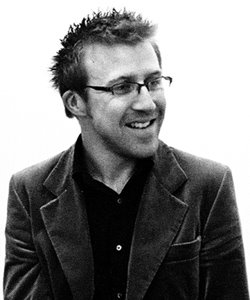Bipolar Disorder

One of the problems with the process is I am entering a period of creative difficulty. I recognise the symptoms. I was diagnosed with suffering from Bipolar Disorder after starting The Long and Winding Road in 2004. It was an intense time. Euphoria. Inertia. At one point I stood with my head beneath the cross at the Church on Rise Park and thought I saw the sky change colour. I read codes in road signs, deciphered registration plates, thought that songs were speaking to me etc. There may be a connection with resurrecting the project later this year for Hinterland - an off-site festival of work in Nottingham. There was a moment when I considered using Bipolar Disorder as a framework for the piece - the two acts being the two extremes of Manic Depression. Positive and Negative. Present and Absent. I was reluctant to do so as I didn't want Acts of Communion to become too cathartic. I didn't see why research was deemed to be more significant if it was scientific. I want interviews with the amateur dramatic group to be research. I want the history of the drama group and the church to be research. I want investigations into contemporary performance to be research. I am finding it difficult to confirm my research questions. I start researching one and then become distracted by another. Perhaps there is something of a Bipolar Disorder in contemporary performance that I need to reference; a world of undecidability and indecision, nihilism and optimism, existential disillusionment and 'laughing amongst the ruins'
From http://en.wikipedia.org/wiki/Bipolar_disorder
Bipolar disorder (also known as manic depression) is a psychiatric diagnostic category describing a class of mood disorders in which the person experiences depression and/or mania, hypomania, and/or mixed states. There are classes of Bipolar Disorder' Bipolar I & Bipolar II. Left untreated, it can be a disabling condition. The difference between bipolar disorder and unipolar disorder (also called major depression) — is bipolar disorder involves elevated mood states and might also involve depressive mood states. The duration and intensity of mood states varies widely among people with the illness. Fluctuating from one mood state to the next is called "cycling". Mood swings can cause impairment or improved functioning depending on their severity. There can be changes in one's energy level, sleep pattern, activity level, social rhythms and cognitive functioning. During these times, some people may have difficulty functioning.
Early in the course of the illness brain structural abnormalities may lead to feelings of anxiety and lower stress resilience. When faced with a very stressful, negative major life event, such as a failure in an important area, an individual may have their first major depression. Conversely, when an individual accomplishes a major achievement they may experience their first hypomanic or manic episode. Individuals with bipolar disorder tend to experience episode triggers involving either interpersonal or achievement-related life events. An example of interpersonal-life events include falling in love or, conversely, the death of a close friend. Achievement-related life events include acceptance into an elite graduate school or by contrast, being fired from work (Miklowitz & Goldstein, 1997).
Veteran brain researcher Robert Post M.D. of the U.S. NIMH proposed the "kindling" theory [1] which asserts that people who are genetically predisposed toward bipolar disorder experience a series of stressful events, each of which lowers the threshold at which mood changes occur. Eventually, the mood episode starts (and becomes recurrent) by itself. Not all individuals experience subsequent mood episodes in the absence of positive or negative life events, however.
In her book, Touched With Fire, Kay Redfield Jamison, Ph.D., writes:
The clinical reality of manic-depressive illness is far more lethal and infinitely more complex than the current psychiatric nomenclature, bipolar disorder, would suggest. Cycles of fluctuating moods and energy levels serve as a background to constantly changing thoughts, behaviors, and feelings. The illness encompasses the extremes of human experience. Thinking can range from florid psychosis, or "madness", to patterns of unusually clear, fast and creative associations, to retardation so profound that no meaningful mental activity can occur. Behavior can be frenzied, expansive, bizarre, and seductive, or it can be seclusive, sluggish, and dangerously suicidal. Moods may swing erratically between euphoria and despair or irritability and desperation. The rapid oscillations and combinations of such extremes result in an intricately textured clinical picture.


0 Comments:
Post a Comment
<< Home